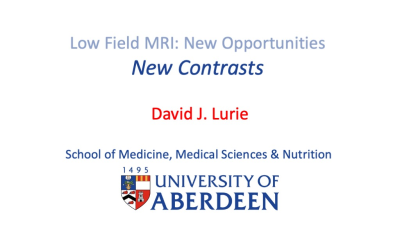Monday Plenary
Plenary Session
ORGANIZERS: Adrienne
Campbell-Washburn, Shaoying Huang, Kathryn Keenan, Najat Salameh,
Mathieu Sarracanie
Monday, 06 May 2024
Plenary Hall (Hall 603-604)
10:30 - 12:15
Moderators: Adrienne
Campbell-Washburn & Shaoying Huang
Session Number: P-01
CME Credit
Session Number:
P-01
Overview
Interest in low-field MRI is rising, identified as a means to overcome
accessibility issues to conventional MRI, or to complement the
traditional Radiology arsenal through new classes of devices with
innovative markers and new imaging paradigms. Through lower cost and
reduced footprint, low-field MRI may bring enhanced access to the
patient, either from expanded compatibility (e.g., patients with
implants, obesity, or claustrophobia) or else through better coverage of
the world population, in particular in underserved areas. Inherently
suffering from lower sensitivity, questioning its overall performance,
academic and industrial efforts in the past decade have delivered
systems that can provide good diagnostic confidence at the bedside and
in Radiology settings. Moreover, covering a wide range of magnetic field
regimes with evolving physics, low-field MRI also offers new
opportunities by way of unique endogenous contrasts yet to be explored.
Target Audience
Clinicians, scientists and engineers, technologists, and trainees at any
career stage working in MRI.
Educational Objectives
As a result of attending this course, participants should be able to:
- Explain the differences between conventional and low-field MRI system
designs;
- Identify new opportunities resulting from new low-field MRI systems;
- Summarize the technologies, challenges, and benefits of smaller
footprint and portable MRI; and
- Describe tissue contrasts that are different at low-field compared to
conventional MRI and the opportunities these present.
|
10:30 |
|
ISMRM Awards: Junior Fellows, Senior Fellows & Gold Medal
Derek Jones
Cardiff University, Cardiff, United Kingdom
|
|
11:15 |
 |
New Contrasts
David Lurie
Keywords: Physics & Engineering: Low-Field MRI, Contrast
mechanisms: Relaxometry
In the 1970s and early ‘80s all MRI was at low field,
typically 0.15T or less; nevertheless, image contrast was
high. Fischer et al. (MRM, 1990) used field-cycling
relaxometry to measure NMR dispersion curves (R1 versus
field strength) of brain grey and white matter over a wide
range of field strengths, showing that endogenous contrast
peaked around 0.2T. Dispersion curves are highly sensitive
to molecular motion and changes in their shape provide new
biomarkers of disease. Data obtained in vivo in patients
with breast cancer will be shown, using Field-Cycling
Imaging which is able to exploit R1 dispersion contrast.
|
|
11:35 |
|
New Applications
Kevin Sheth
|
|
11:55 |
|
New Access
Clarissa Cooley
|

